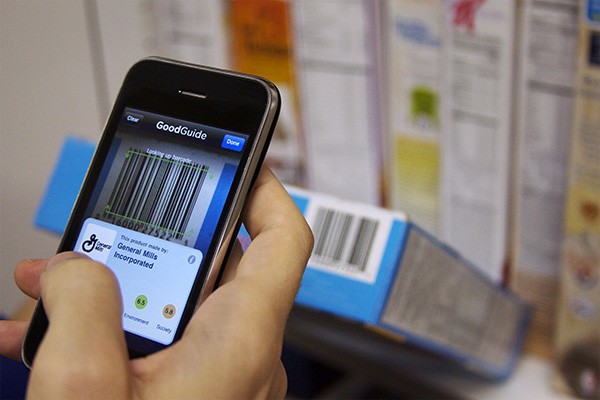Food product information delivery to consumers has been a trending topic in recent days. The first two weeks of June have been action packed as far as the packaged food industry goes and the undeniable growing trend of consumers wanting to know more about the food products they consume.
A decade ago, a consumer’s knowledge and efforts to know more about a packaged food product would be restricted to picking up the package and reading the label. Today, we’ve moved to searching online for ingredients, using apps to trigger warnings for ingredients, pulling up comparisons and reviews, reading blogs, watching product videos or asking others about a packet of cereal.
On June 1st the story of how consumers in Canada are scanning fish with their smartphones to learn which fisherman caught it and where it comes from spread across online media. The same day, there were discussions and releases in the media about labeling foods to indicate whether foods are GMO products and how consumers. The day after, news on the discussion of using QR codes to trigger videos that educate consumers about dietary supplements circulated and Nestle’s Maggi Noodles brand being pulled off shelves in India with some contents in question, discussions around knowing more about what you’re eating has spread across social media like wildfire.
Consumers today are not just more conscious about what they’re buying, they have mobile access to the web and look up information before putting things into their shopping cart. Not all that information is manufacturer or brand supplied and a significant portion of it remains inaccurate and unverified. Consumers, however, seek more product information from any easily accessible source they can find it. There are mobile apps that enable consumers to identify certain ingredients they are looking to avoid in food products. There are technologies to help consumers check traceability of origins, identify preparation processes, warn of allergens, calculate calorie intake and more. Combined with the discussions people have online, the food and nutrition-related articles they see online each day and the growing combined awareness on food, today’s consumer is clearly hungry for more information on the food products they consume and the ball lies in the manufacturers court as to how they choose to deliver more accurate and detailed product information to their customers.
Many of the brands more conscious of this need have started taking a closer look at initiatives such as the Extended Packaging initiative to make accurate product-related data available to consumers on their mobile via packaging, making verified B2C data available to buyers as well as those offering apps and publishing this data to consumers. While others have relied on associations, non-government organizations or even government organizations to drive the role of making more reliable information accessible to consumers.
At the end of the day, it’s evident that consumers are demanding more transparency and more information on the food products they purchase. How soon brands and manufacturers will be able to prioritize this need and make their information easily available? We’ll have to wait and see.



